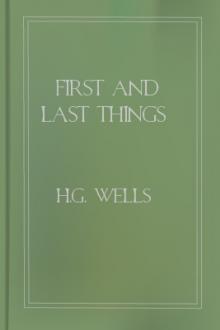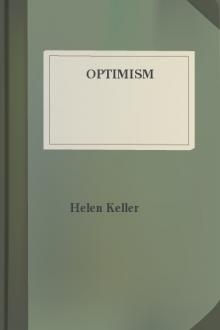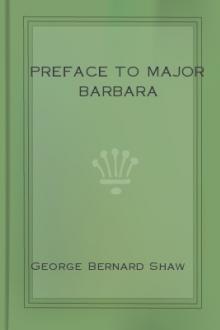Lippincott'S Magazine Of Popular Literature And Science, Volume 26 December, 1880., Various None [best books to read for beginners .txt] 📗

- Author: Various None
Book online «Lippincott'S Magazine Of Popular Literature And Science, Volume 26 December, 1880., Various None [best books to read for beginners .txt] 📗». Author Various None
Checks Slightly A Slow Current, And By The Pressure Of A Strong One
Becomes Compacted And Forms A More Effective Obstacle. In Most Cases,
However, It Soon Becomes Solid With Condensed Matters From The Gas.
Another Form Of Check Is A Small Cap Having Perpendicular Slits At The
Sides. The Cylinder Of The Cap, Being Smaller Than The Orifice Of The
Burner, Screws Down Into It; The Openings Being Shortened Or Lengthened
According As The Cylinder Is Screwed Up Or Down. One Objection To This
Is The Trouble Required In Regulating. Here Is Another Burner, In Which
The Orifice Ends In a Cap Whose Sides, Near The Bottom, Are Pierced With
Four Pin-Holes Directed Downward. This Reverses The Direction Of The
Current Of Gas, Which Then Escapes Through The Pin-Holes Downward Into A
Chamber, Then Turns Upward Along Its Sides To The Tip, On Entering Which
It Again Turns. Each Burner Is Able To Consume Economically A Flow Of
Gas Peculiar To Itself, Which Can Be Ascertained By A Minute'S
Volume 26 Title 1 (Lippincott'S Magazine Of Popular Literature And Science) Pg 101Experiment, And Then Regulated By The Tap In The Pipe. But This Requires
Much Care, And Is Apt To Be Neglected. A Very Small Tap In The Burner
(As In The Wood And Ellis Burners), Which Can Be Adjusted So As To
Require No Further Attention, Seems The Best Method Of Effecting This
Graduation."
The Chemist Now Pulled A Manuscript From His Pocket And Read From It As
Follows: "The Quantity Of Light Decreases With Disproportionate Rapidity
By Reduced Consumption; For, As Experiments Have Shown, When Consuming
Only Two Feet Per Hour, Eighty-Five Per Cent. Of The Gas Is Lost; With
Two And A Half Feet The Loss Is Sixty Per Cent.; And With Three And A
Half Feet It Is Thirty-Four Per Cent. Of That Derived From The Gas When
Burning The Full Quantity For Which The Burner Is Constructed. In Some
Experiments Made Upon This Matter Under The Direction Of Referees
Appointed By The London Board Of Trade The Loss At The Other Extreme Is
Given. They Report: 'Instead Of The Gas Giving Increased Light As The
Rate Of Consumption Is Increased, It Will Be Seen That _In Every Case_
There Is A Point Beyond Which The _Light Decreases_ Relatively To The
Proportion Of Gas Consumed. In every Case, Too, This Point Lies Far
Below The Maximum Of Gas-Consumption, Observing The Turning-Points In
The Case Of The Different Burners.' Again, Every Burner Has A Certain
Amount Of Gas Which It Will Consume To The Greatest Advantage As To Both
Light And Economy; Which In a Completely-Regulated Burner Is Quickly
Found, And The Delivery Fixed By The Small Tap. When The Gas Is Issuing
From The Burner At So Low A Pressure That The Flame Is Just On The Point
Of Smoking, The Maximum Effect For The Quantity Of Gas Consumed In That
Particular Burner Is Attained, Because In That Case The Quantity And
Intensity Of The Light Are Most Advantageously Balanced. For The Same
Reason, The Burner Best Suited For Light Is One In Which The
Jet-Openings Are Proportionately Large, So As To Prevent As Much As
Possible Too Great Contact With The Air In The Lower Part Of The Flame.
In Case The Air-Currents Disturb The Light, It Is Necessary To Turn On A
Stronger Flow, Which Secures Steadiness, But Sets Economy At Naught."
"It Would Be A Good Thing," Said The Young Fellow, Interrupting Him, "If
Some Person Would Invent A Burner That Should Heat The Gas Before Its
Discharge. We Could Then Get A Perfect Combustion Of The Carbon, And So
Greater Brilliancy And Economy."
"That Is A Very Common Error. Mr. Leslie'S Burner Was Designed On That
Very Theory: The Result Was Contrary To Expectation."
"What Was The Form Of The Burner?" Inquired Our Host.
"Leslie'S Burner Is A Form Of The Argand. The Gas, Instead Of Issuing
From Holes Pierced In a Solid Ring, Is Conducted To The Flame In
Separate Small Tubes Upward Of An Inch Long. Twenty-Eight Of These Tubes
Are Inserted In a Ring Two Inches In diameter, And Converge To One Inch
At The Ends, Where The Gas Escapes. These Tubes Become Hot Very Quickly
When The Gas Is Lighted, And It Issues At A High Temperature. Here Is
The Result Of A Test Made By Mr. Clegg, And Given On Page 344 Of His
Valuable Work On Coal Gas:
Common Argand, Fifteen Holes.
Consumption Per Hour In cubic Feet:
6 Feet, Light = 17.4 Standard Candles.
5 Feet, Light = 13.64 Standard Candles
Volume 26 Title 1 (Lippincott'S Magazine Of Popular Literature And Science) Pg 102Leslie'S Burner, Twenty-Eight Holes.
6 Feet, Light = 14.73 Standard Candles.
5 Feet, Light = 11.28 Standard Candles.
"In Experimenting With Common Burners, Argand And Others, It Is Found
That, If The Aperture In The Tip Is Too Small For The Orifice In The
Body Of The Burner, The Escaping Gas Is Too Highly Heated And Is
Consumed Too Quickly. So With Leslie'S Burner In an Increased Degree.
Theories Brought To The Test Of Experiment Are Often Disappointing."
The Chemist Now Proceeded To Illustrate His Harangue With The Argand
Upon The Table, Which He Lighted And Turned On Full, Without Replacing
The Chimney. The Dull-Red Flame Streamed Up To A Height Of Eight Inches
Or More, Waving And Smoking Slightly. He Now Turned Down The Gas And
Replaced The Chimney, Then Set The Tap At The Same Angle As Before.
"Here," Said He, "We Have A Flame Barely Four Inches High--Of Brilliant
White--Which Gives More Light Than The Taller Flame Did. The Cause Of
The Shortening Of The Flame Is The More Rapid Combustion Of The Gas,
Owing To The Increased Draught Or Air-Supply In The Chimney. From The
Greater Intensity Of This Flame A Much Larger Quantity Of Light Is
Produced Than By The Longer Flame. If Too Tall A Chimney Is Used, The
Flame Is Shortened Still More And Its Brilliancy Increased, But Not To A
Degree Sufficient To Compensate For The Diminished Surface. The Light,
You Are Doubtless Aware, Comes From The Incandescence Of The Carbon,
Heated By The Union Of The Hydrogen Of The Gas With A Portion Of The
Oxygen Of The Air."
The Chemist Now Read From His Manuscript Again: "Carburetted Hydrogen Of
A Passably Good Quality Requires Two Volumes Of Pure Oxygen For Its
Complete Combustion And Conversion Into Carbonic Acid And Water.
Atmospheric Air Contains, In Its Pure State, About Twenty Per Cent. Of
Oxygen; Therefore, One Cubic Foot Of Gas Requires For Its Perfect
Combustion Ten Cubic Feet Of Air. If Less Be Admitted To The Flame, A
Quantity Of Free Carbon Will Escape, And Be Deposited In The Form Of
Black Smoke. If An Excess Of Air Be Admitted, We Shall Find That The
Quantity Of Nitrogen Accompanying This Excess Has A Tendency To
Extinguish The Flame, While It Takes No Part In The Elective Affinity
Constantly Going On Between The Other Elements--Namely, Hydrogen, Oxygen
And The Vapor Of Carbon.
"Again," Said He, Turning Down The Gas, "If The Flame Be Reduced To A
Consumption Of Two Feet Per Hour, Its Light Will Be Equal To That Of One
Candle Only; But On Raising The Chimney, Thus, About Half An Inch From
The Gallery Or Support The Light Is Greatly Increased, Or By Simply
Placing A Disk On Top Of The Chimney The Light Is Increased Ninefold;
Both Of Which Effects Seem To Result From A Diminished Current Of Air,
While At The Same Time There Is An Ample Supply. Lastly, With The
Ordinary Glass Moon-Globe So Generally Used In dwellings With The
Fishtail Burner Little Difference Can Be Perceived Between The Light
Given From The Flame By Four Feet And That From Six Feet Of Gas Per
Hour, In consequence Of The Strong Current Of Air Passing Up Through The
Globe; But If The Top Of The Glass Be Enclosed By A Talc Cover Having An
Orifice In The Centre About An Inch In diameter, Then The Conditions Of
The Burner Are Completely Changed. The Light Is Greatly Increased,
Because The Highest Economical Advantage Is Then Approached."[2]
Volume 26 Title 1 (Lippincott'S Magazine Of Popular Literature And Science) Pg 103
"Smoke From The Aperture And Lamp-Black On The Cover Must Result From
Such An Arrangement," Objected The Old Gentleman.
"There Need Be Very Little Of Either," Responded The Chemist. "From Some
Burners There Is Little Light Without Smoke. A Smoky Flame May Arise
From Too Much Carbon, But The Gas Companies In This Part Of The Country
Are Not Apt To Make Their Product Too Rich; And Such A Condition Is Not
Likely To Occur Except With Vapor-Gas When Warm Weather Quickly Succeeds
To A Cold Spell In The Winter Season. The Consumer'S Immediate Remedy In
Any Case Is To Use A Smaller Tip With The Fishtail And Batwing Burners,
And A Taller Chimney With The Argand; Which Devices Will Give A Quicker
Movement To The Gas In One Case And To The Air In The Other. The
Smoking, However, May Be Caused By Carbonic Acid, Which Checks
Combustion. There Is Always More Or Less Of This In Gas, Arising From A
Partial Combustion In The Retorts When Charging Them With Coal Or While
Withdrawing The Exhausted Charge. But It Is Only By Excessively Slow And
Careless Work That This Can Happen To A Serious Extent. Only An Expert
Can Tell When This Condition Exists, Though If The Symptoms Do Not Yield
To Manipulations Of The Chimney And Tap, It May Be Suspected. There Is
No Effective Remedy For This Adulteration Which Can Be Applied By The
Consumer Except A Vigorous Complaint Against The Company Which Supplies
The Stuff.
"There Remains One Burner Or Lamp To Be Mentioned, Contrived With
Special Reference To Health," He Continued--"The Ventilating Standard
Lamp Of Doctor Faraday, Used In The House Of Lords. In This There Is An
Outer Glass By Which The Vitiated Air Passes Away Through The Pipe
Communicating With The External Air. The Lamp Is Interesting, But There
Is A Question Whether There Is Any Practical Advantage In Its Use.
Rutter'S Ventilating Lamp Is Of Different Form, Having A Globe Instead
Of An Outer Cylinder, The Gas And Air Coming In From Above. Some Of The
Best Dwellings Now Being Erected In The Vicinity Of New York Are
Provided With Tin Pipes Leading From The Burners To The Open Air. In
Some The Pipe Receives The Foul Air





Comments (0)